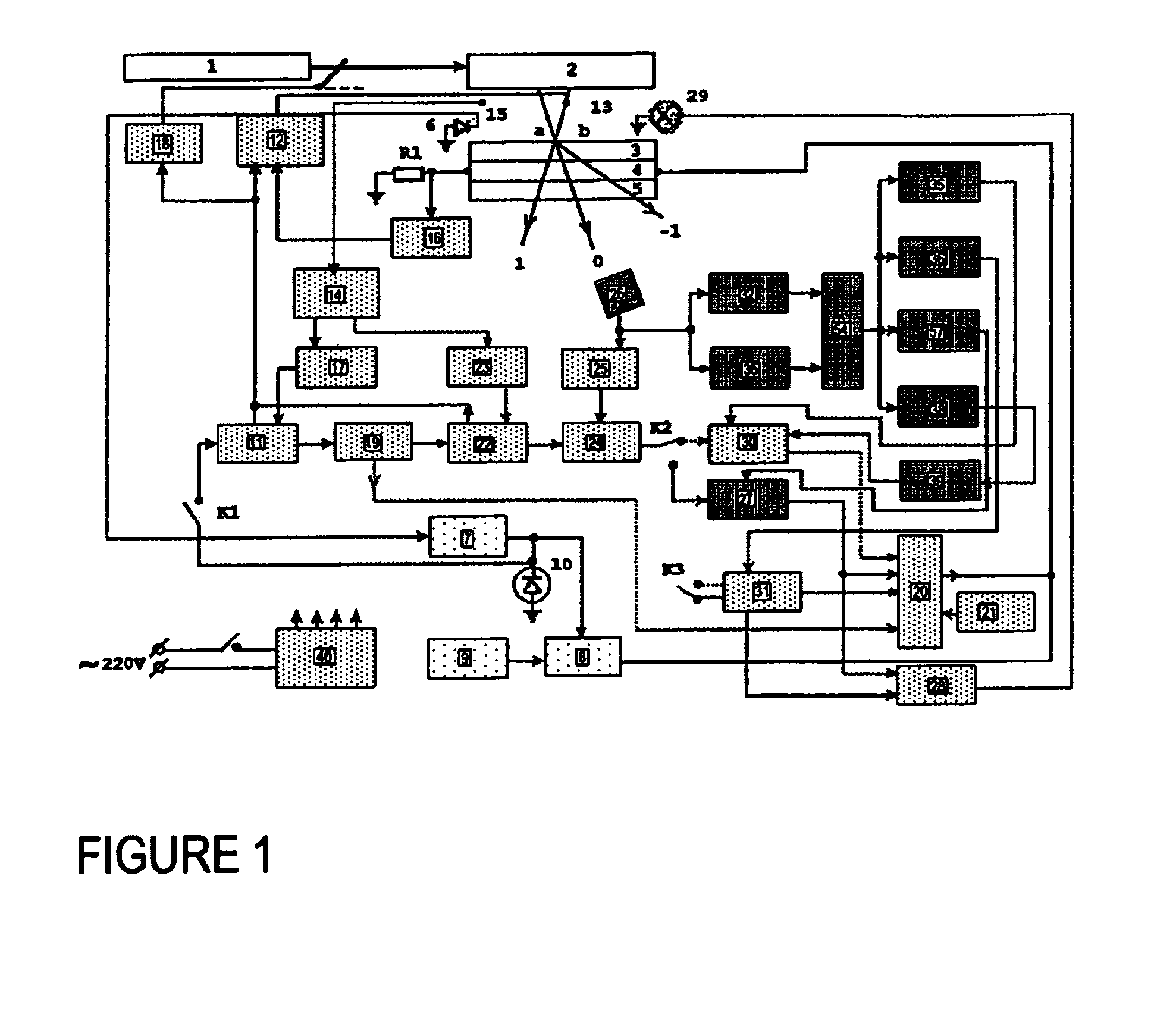Device for registration of optical holograms on the amorphous molecular semiconductor films
a technology of amorphous molecular semiconductor and optical hologram, which is applied in the field of optical hologram registration on the amorphous molecular semiconductor films, can solve the problems of destroying the registering medium, unable to achieve the maximum achievable and reproducible band parameters of the spatial frequency of the transmitting, and unable to register holograms, etc., to achieve the effect of reducing the dark conductivity of the ams-film and eliminating bulk and surface space charges
- Summary
- Abstract
- Description
- Claims
- Application Information
AI Technical Summary
Benefits of technology
Problems solved by technology
Method used
Image
Examples
Embodiment Construction
[0046]The invention will now be described in greater detail by reference to the block-diagram presented in FIG. 1 which show a control device for registering optical holograms according to a preferred embodiment of the invention. The control device consists of:[0047]A source 1 of coherent light (laser) with an optical scheme 2 of hologram formation,[0048]a registering medium 3–5, where 3 is the AMS-film containing 92 wt % of a copolymer comprising N-epoxypropylcarbazole copolymer with 5 wt % buthy1glycedile ether doped with 5 wt % methyl-9-(4-dodecyl-oxyphenyl-1,3-selenathiol-2-ylidene)-2,5,7-trinitrofluorene-4-carboxylate (MDOSTFC) and 4 wt % hexadecyl-2,7-dinitro-dicyanomethylenfluorene-4-carboxylate (HDDFC),[0049]an electric circuit 6–10 for the setting of the optimal initial temperature of the registering medium, where 6 is a temperature sensor installed immediately on the AMS-film surface 3, 7 is an initial temperature comparator which sets the initial temperature, compares the...
PUM
 Login to View More
Login to View More Abstract
Description
Claims
Application Information
 Login to View More
Login to View More - R&D
- Intellectual Property
- Life Sciences
- Materials
- Tech Scout
- Unparalleled Data Quality
- Higher Quality Content
- 60% Fewer Hallucinations
Browse by: Latest US Patents, China's latest patents, Technical Efficacy Thesaurus, Application Domain, Technology Topic, Popular Technical Reports.
© 2025 PatSnap. All rights reserved.Legal|Privacy policy|Modern Slavery Act Transparency Statement|Sitemap|About US| Contact US: help@patsnap.com


